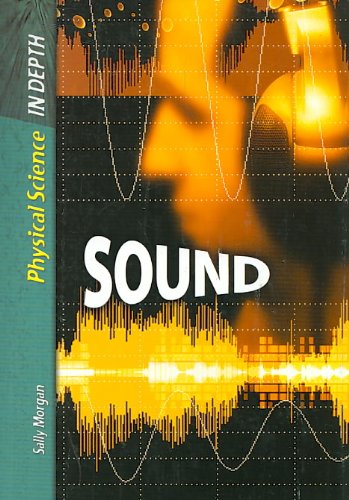-
Sound
Andrew Haslam
Hardcover (Cooper Square Publishing Llc, Aug. 1, 2000)Sound is a unique blend of imaginative activities, experiments and science facts that helps develop scientific thought. The vast Make it Work series teaches scientific principles through the hands-on process of making science work. It's an invaluable science series for school and home, mixing hobby and science in an effort to show kids how to observe, collate information, and reach conclusions. The easy-to-follow instructions and helpful color photos make it a great resource for children ages 8-11. V
V
-
Sound
Jack Challoner
Hardcover (Hodder Wayland, Sept. 21, 2006)None
-
Sound
Andrew Haslam
Paperback (Cooper Square Publishing Llc, May 1, 2000)Sound is a unique blend of imaginative activities, experiments and science facts that helps develop scientific thought. The vast Make it Work series teaches scientific principles through the hands-on process of making science work. It's an invaluable science series for school and home, mixing hobby and science in an effort to show kids how to observe, collate information, and reach conclusions. The easy-to-follow instructions and helpful color photos make it a great resource for children ages 8-11. V
V
-
Sound
Steve Parker
Paperback (Heinemann Library, May 25, 2006)Uses brief text, illustrations, quizzes, games, and experiments to explain all about sound, which sounds animals and humans can hear, how sound can smash matter, and how it can heal.
-
Sound
Sally Morgan
Paperback (Heinemann, Oct. 15, 2007)Why does a siren’s sound change as it passes you? How does sound become music? Can sound damage our ears? This title looks at what sound is, how sound is made, how sound waves travel, and how humans and other animals hear sound. Find out why sound travels faster through water than through air, how it is possible to 'see' using sound, and how sound is recorded. X
X
-
Sound
Thomas Bell
Paperback (CreateSpace Independent Publishing Platform, Nov. 9, 2013)If your child is struggling with science, then this book is for you; the short book covers the topic and also contains 5 science experiments to work with, and ten quiz questions. The book covers the following: What Is Sound How Sounds Are Heard Music To Your Ears Listen To The Songs On The Radio Noise Pollution Sound…More Than Meets The Ears The Oldest Question Experiments In Sound This subject comes from the book “Fourth Grade Science (For Home School or Extra Practice)”; it more thoroughly covers more fifth grade topics to help your child get a better understanding of fifth grade math. If you purchased that book, or plan to purchase that book, do not purchase this, as the problems are the same.





